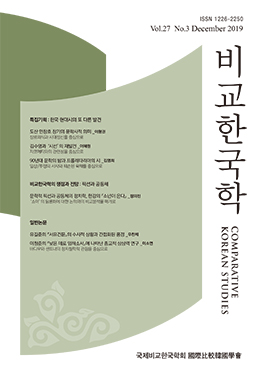도산 안창호는 구한말과 일제강점기를 구국의 열정으로 살다간 애국독립운동가이다. 그는 창가를 25편가량 창작한 시인이지만, 시인으로서의 그의 삶에 대한 연구는 아직 이루어지지 않았다. 이 글은 도산을 시인으로 호명하여 그 문학사적인 의미를 탐구한 것이다. 그 과정에서 다음과 같은 결과를 도출했다.
첫째, 도산의 창가는 장르적 자의식과 다양한 형식을 보여주었다. 도산은 초기 형태인 3·4조, 4·4조, 6·5조, 7·5조, 8·5조의 음수율뿐만 아니라, 2음보와 3음보, 4음보의 음보율을 다양하게 구사했다. 2행 1연, 4행 1연 등의 형식도 두루 보여주었다. 그 표현법에서도 대구법이나 반복법과 같은 창가의 일반적인 표현법을 비롯하여 직유법, 은유법, 상징법, 영탄법 등 다양한 수사법을 활용하고 있다. 그는 창가작가로서의 시적 자의식을 지니고 있었다.
둘째, 도산의 창가는 문명계몽과 애국독립을 중심 내용으로 한다. 이는 창가 장르가 유행했던 구한말과 일제강점기의 시대정신과 온전히 부합한다. 또한 창가가 지녔던 장르적 특성과도 일치한다. 도산은 이러한 창가를 자신이 일평생 추구했던 문명계몽과 애국독립운동에 적극적으로 활용했다. 이런 점에서 도산은 창가와 자신의 삶, 그리고 시대정신을 극단적으로 일치시킨 대표적인 사례에 속한다.
셋째, 도산의 창가는 애국계몽기의 중요한 문학사적 자산이다. 창가의 영역에 한정해서 본다면, 도산은 이광수나 최남선 등과 견줄 만한 성과를 보여주었다. 특히 미주 시문학사에서 그 형성기에 도산은 매우 중요한 역할을 했다. 당시 미주 시단은 형성기에 해당하는 초창기 형태를 띠고 있었는데, 도산은 미국 유학을 계기로 한인들의 결속과 애국독립의식을 심어주는 데 창가를 적극적으로 활용했다.
요컨대 도산은 19세기 말과 20세기 초의 한국문학사에서 창가 작가로서의 역량을 충실히 보여주었다. 그는 창가의 장르의식뿐만 아니라 그 시대정신에 부합하는 작품을 다수 창작했던 것이다. 따라서 그는 미주 한인시문학사 또는 한국 근대시문학사 초창기의 중요한 시인으로 기록되어야 한다.
Dosan, Ahn Changho is an avid independent movement activist during Japanese Colonial period. He wrote about twenty five poems called Changga but there are not any researches about his achievement as a poet yet. Thus, this study examines the meanings of his poems in terms of Korean literary history as acknowledging him as a poet as follows:
First, Dosan’s Changga presents his understanding of poetry genre and various poetic forms in his literary texts. Dosan uses various early forms of Changga such as syllabic meters (3·4, 4·4, 6·5, 7·5, and 8·5), and foot meters (dimeter, trimeter, and tetrameter) as well as two lines one stanza, and four lines one stanza. He also uses common poetic expressions of poetry such as parallelism and repetition as well as figures of speech such as similes, metaphors, symbols, and exclamation. He embraces self-consciousness as a poet.
Second, in terms of themes, Dosan’s Changga focuses on enlightenment of civilization, patriotism and independence, which are aligned with zeitgeist of Japanese colonial period when Changga was flourished. Also, his themes are in accord with genre characteristics that Changga embraces. Dosan actively applies his poetic endeavors to his life long goals such as enlightenment of civilization and independence of Korea. in this regard, Dosan is an exemplary figure who harmonizes his poems, his life and zeitgeist of his time.
Third, Dosan’s Changga is the important literary asset of the patriotic enlightenment period of Korea. The achievement of Dosan in the area of Changga can match Lee Gwangsu and Choi Namseon. In particular, Dosan plays an important role in forming the Korean American literary circle at the early stage when Korean American poetry circle was just established. Dosan goes to the States to study and uses Changga to encourage Korean Americans to cement their unity and to have patriotism and independent spirits.
In conclusion, Dosan shows his brilliant abilities as a writer in the late nineteenth and early twentieth century, and contributes to expanding the horizon of the history of Korean literature. He wrote various poems that correspond with his understanding on literary genres and zeitgeist of his time. He deserves to be recognized as a significant poet in the literary history of Korean Americans and the history of Korean modern poetry.




